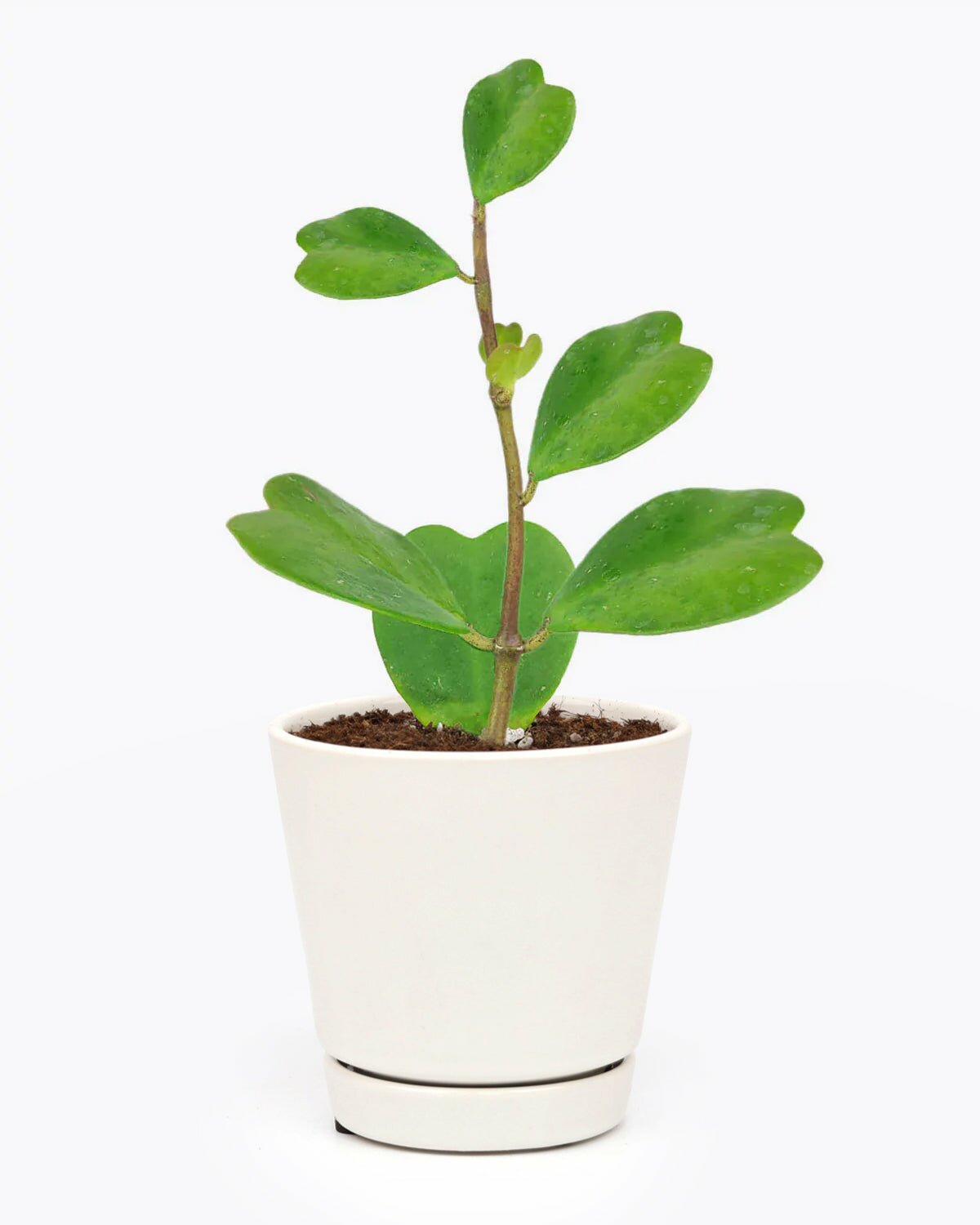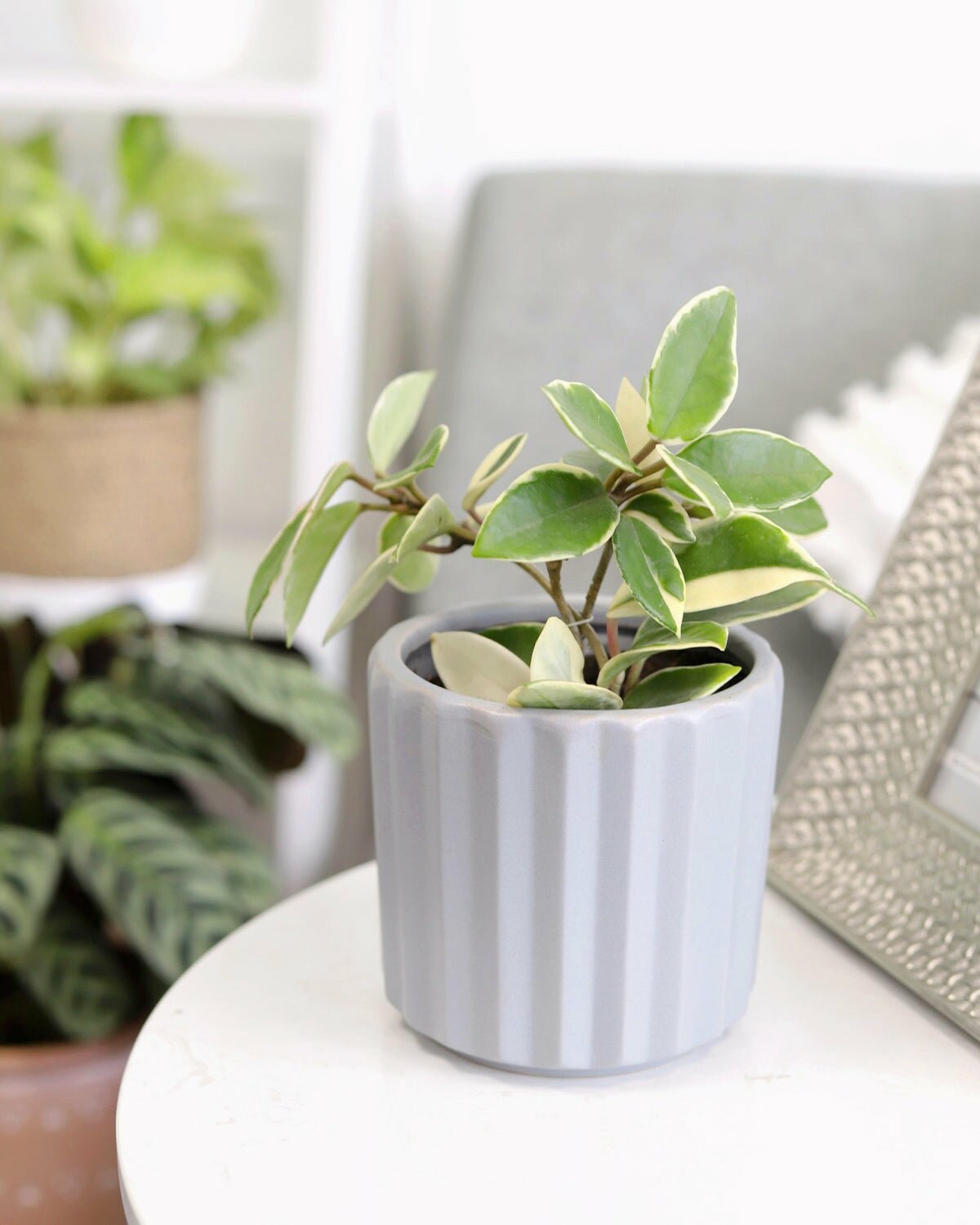Welcome to Best Plant Friend, your ultimate destination for all things related to houseplants. We have a wide selection of plants from the most popular and sought-after genera. If you are looking for where to buy the Hoya genus, you’ve come to the right place. We have some of the healthiest and most beautiful plants in the Hoya genus for sale, all lovingly nurtured in our own California-based nursery.
Hoya Genus
Belonging to the Apocynaceae family and originating from Asia and Australia, they are prized for their semi-woody vines and distinctive characteristics. With over 500 accepted species, each Hoya variety offers its own unique leaf shapes, colors, and flowering patterns. Popular Hoya species include Hoya Kerri Heart, Hoya Wayetii, Hoya Pubicalyx Pink Silver, Hoya Australis Lisa, and Variegated Hoya Carnosa.
Hoya- A popular houseplant genus with many benefits
Hoya plants offer numerous benefits that make them highly sought after as houseplants. They are known for their air-purifying properties, helping to improve indoor air quality by removing harmful pollutants. Additionally, they are considered non-toxic and pet-friendly, making them safe to have around furry companions. Hoya plants are also recommended for beginners, as they have relatively low maintenance requirements and can tolerate various light conditions, including low-light environments. Moreover, their stunning flowers make them popular choices for gifts and can add natural beauty and fragrance to any indoor space.
Hoya Care
Can Hoya plants grow in low light?
When it comes to caring for Hoya plants, providing the right lighting conditions is crucial for their overall health and growth. While they generally prefer bright, indirect light, they are adaptable to different light settings, including medium and low-light environments. In lower light conditions, their growth may be slower, and they may produce fewer flowers. However, with proper care, they can still thrive and display their unique foliage.
How much water do Hoya plants need?
Watering is another important aspect of Hoya plant care. These plants prefer to dry out slightly between waterings to prevent overwatering and root rot. It is recommended to allow the top inch or two of soil to dry out before watering again. When watering, it's important to thoroughly saturate the soil and allow any excess water to drain away. This helps ensure that the roots receive adequate moisture without being constantly waterlogged.
What is the best soil for Hoya plants?
Choosing the right soil mix is essential for Hoya plants. They thrive in well-draining soil that allows excess water to flow freely and prevents waterlogging. A mix of peat moss, perlite, and orchid bark or sand works well for providing the proper drainage and aeration needed for Hoya plants. This type of soil mix allows water to pass through easily while retaining enough moisture for the roots.
What are the benefits of fertilizing Hoya plants?
Fertilizing Hoya plants during the growing season can help promote healthy growth and encourage blooming. A balanced fertilizer with equal ratios of nitrogen, phosphorus, and potassium is suitable for Hoya plants. It's best to use a diluted fertilizer solution and apply it every two to four weeks during the active growing season. Be sure to follow the instructions on the fertilizer package for the proper dosage and application method. During the dormant period in fall and winter, it's generally recommended to reduce or stop fertilization as the plant's growth slows down.
What is the best temperature for Hoya plants?
Hoya plants thrive in average room temperatures ranging from 65°F to 75°F (18°C to 24°C). They can tolerate slight temperature fluctuations but should be protected from extreme temperature changes and drafts. Avoid placing them near windows or doors that may expose them to cold drafts during the winter months. In hot summer months, it's important to shield them from direct sunlight and excessive heat, as this can cause stress to the plants.
How can you increase humidity in Hoya plants?
In terms of humidity, Hoya plants appreciate moderate to high humidity levels (around 50% or higher). While they can adapt to average indoor humidity, providing some extra humidity can benefit their growth and overall health. This can be achieved by methods such as misting the leaves regularly, placing the plant on a tray of water with pebbles, or using a humidifier in the surrounding area. These measures help create a more humid microclimate around the plant, mimicking their natural tropical habitat.
It is also important to provide good airflow, as a humid environment might be a breeding ground for pests, fungal infections and root rot.
How can you encourage bushier growth in Hoya plants?
Pruning Hoya plants is an important aspect of their care routine as it helps maintain their shape, promote healthier growth, and prevent the accumulation of damaged or dead leaves. When pruning, it's essential to remove any yellowed, browned, or wilted leaves by making clean cuts near the base of the stem. This not only improves the overall appearance of the plant but also allows it to focus its energy on producing new foliage and flowers. Additionally, trimming leggy stems can encourage bushier growth and a more compact appearance. It's important to use sharp and sterilized pruning shears to minimize the risk of introducing any diseases or infections.
What is the easy propagation method for Hoya plants?
Propagation of Hoya plants can be achieved through stem cuttings, which is a popular and successful method. To propagate through stem cuttings, select a healthy stem and make a clean cut just below a node, ensuring the cutting is about 4-6 inches in length. Remove the lower leaves, leaving only a few at the top. It's beneficial to allow the cut end to callus for a few days before planting it in well-draining soil or placing it in water. If using soil, make a small hole in the soil and insert the cutting, gently pressing the soil around it. If using water, place the cutting in a glass or container filled with water, making sure that the nodes are submerged. Keep the cutting in a warm and bright location, away from direct sunlight. Roots should start to develop within a few weeks, and once they are well-established, the cutting can be transferred to its own pot or container.
Does Hoya bloom?
Hoya plants are renowned for their exquisite flowers, and encouraging blooming requires providing the right conditions. Adequate light is crucial for Hoya plants to initiate and sustain flower production. They prefer bright, indirect light and thrive when placed near a window where they can receive several hours of indirect sunlight each day. Avoid exposing them to direct sunlight as it can scorch the leaves and negatively impact flower production.
How can I make my Hoyas bloom?
To encourage blooming, slight stress can be beneficial for Hoya plants. This can be achieved by providing them with short periods of drier conditions or slight temperature fluctuations. Allowing the soil to dry out slightly between waterings or adjusting the temperature within their preferred range can simulate the natural growth conditions of Hoya plants and trigger flowering.
During the active growing season, which is typically spring and summer, it's essential to provide Hoya plants with balanced fertilization. Using a fertilizer with equal ratios of nitrogen, phosphorus, and potassium can provide the necessary nutrients for healthy growth and abundant flowering. Apply the fertilizer according to the package instructions, ensuring that the soil is moist before application. It's important to note that excessive fertilization can lead to excessive foliage growth at the expense of flower production, so it's best to follow the recommended dosage and frequency.

 Calathea
Calathea Philodendron
Philodendron Air-Purifying Houseplants
Air-Purifying Houseplants Best Houseplants For Beginners
Best Houseplants For Beginners





























